IC 1848, The Soul Nebula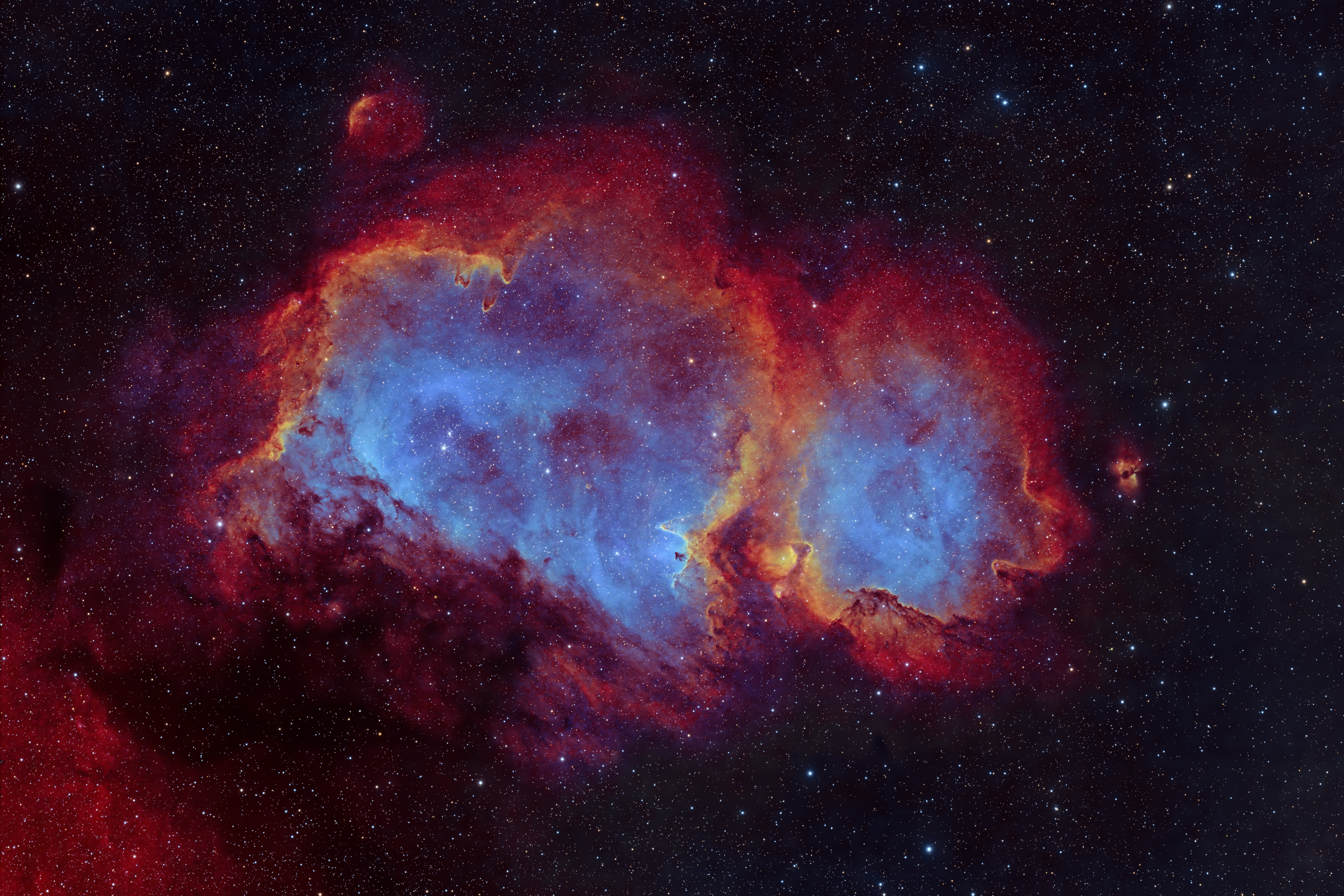
Click image for full size version
November 22, 2025
This beautiful cloud of glowing hydrogen gas is the Soul Nebula, catalogued as Sh2-199 and LBN667. It’s also known as Westerhaut 5. The nebula looks like a baby if you rotate the image, and is also known as the Baby Nebula. Others see a footprint (maybe we should call it the Sole Nebula?). It lies about 7,500 light years away in Cassiopeia. For this image, I used narrowband filters to capture mainly emissions of sulfur, hydrogen and oxygen. I combined them using the Foraxx palette.
In addition to the big nebula that dominates this image, this region is home to numerous open clusters. IC 1848 is leftt of centre, dominated by a pair of bright whitish stars. The “head” contains several clusters from the Collinder Catalogue of Open Star Clusters (CR631, 632 and 634). There are also a couple of other Sharpless objects in the image. Check the annotated image for the identities of some of the other objects in the image.
Scientifically, the Soul Nebula is a significant object: it provided important evidence for the “triggered star formation theory”. This theory says that older bright stars near the centre push gas atoms outwards and towards each other, causing new stars to form. Analysis of images of the Soul has shown that its oldest stars are near the centre of the nebula, with age decreasing with increasing distance from the centre.
If you’d like to see more of this region, check out my recent image of the Heart Nebula (outside the frame to lower left in this image), or a wider field view showing the Heart and Soul Nebulae together.
Tekkies:
Acquisition, focusing, and control of Paramount MX mount and other equipment with N.I.N.A. and TheSkyX. Sky-Watcher Esprit 70 EDX refractor, QHY367C Pro camera and Optolong Filters. Unguided. Focus with Primalucelab Sesto Senso 3 on the Sky-Watcher stock focuser. Equipment control with Primalucelab Eagle 4 Pro computer. All pre-processing and processing in PixInsight. Acquired from my SkyShed in Guelph. Acquired under average transparency and seeing and nearly full Moon from October 4 to 10, 2025.
L-Synergy Filter: 172 x 5m = 14hr 20m
L-eXtreme Filter: 191 x 5m = 15hr 55m
Total: 30hr 15m
Preprocessing: The WeightedBatchPreProcessing script was used to perform calibration, cosmetic correction, weighting, registration, local normalization, integration and Drizzle integration of all frames (Fast Drizzle, Scale=2x, Drop Shrink=0.9).
Gradient Removal: DynamicBackgroundExtraction was applied to the two masters (L-Synergy = SOO; L-eXtreme = HOO).
SHO Master Creation: The DBExtract script was use to create S, H and O masters from HOO and SOO. The S, H, and O were combined using ChannelCombination with S assigned to red, H to green and O to blue.
Deconvolution: BlurXterminator was applied to the SHO image using an automatic PSF, star sharpening set to 0.50, and non-stellar sharpening set to 0.9.
Linear Noise Reduction: NoiseXterminator was applied with Amount=0.95 and Detail=0.5
Stretching: HistogramTransformation was applied to make a pleasing yet bright image. Approximate background level after stretch was 0.10
Nonlinear Processing
Star Removal: StarXterminator was used to remove the stars, with Unscreen selected.
Nonlinear Noise Reduction: NoiseXterminator was applied with Amount=0.9 and Detail=0.25
Contrast Enhancement: HistogramTransformation was used to adjust brightness and black point. LocalHistogramEqualization was applied twice. A Contrast Limit of 1.5 and 1 iteration was used for each LHE application (scale 40, strength 0.25; scale 150, strength 0.28). ExponentialTransformation was applied.
Sharpening: A mask that selected just the brightest parts of the nebula was used with MultiscaleMedianTransform to sharpen Layers 2 – 5 with strengths of 0.03, 0.03, 0.03, and 0.02, respectively.
Foraxx Palette Image Creation: The S, H and O channels were extracted from the SHO starless image and combined using the Foraxx Palette Utility script.
Contrast, Brightness and Colour Adjustment: Brightness, contrast, hue, and saturation of both images were adjusted in several iterations using CurvesTransformation and ExponentialTransformation, with masks as required.
Star-only Processing: Magenta stars were corrected in three steps. 1) The stars-only image was inverted. 2) SCNR was applied. 3) The image was inverted back to its original state. The lightness was extracted from the stars-only image and used to make a mask. Colour in the stars was boosted through the mask with CurvesTransformation’s Saturation tool. Star sizes were reduced slightly with CurvesTransformation.
Star Restoration: PixelMath was used to insert the stars back into the starless image using the following expression:
combine(starless, stars, op_screen())
Final Steps: Background, nebula and star brightness, contrast and saturation were adjusted in several iterations using CurvesTransformation with masks as required. ICCProfileTransformation (sRGB IEC61966-2.1; Relative Colorimetric with black point compensation) was applied prior to saving as a jpg. The finder chart was made using the FindingChart process.

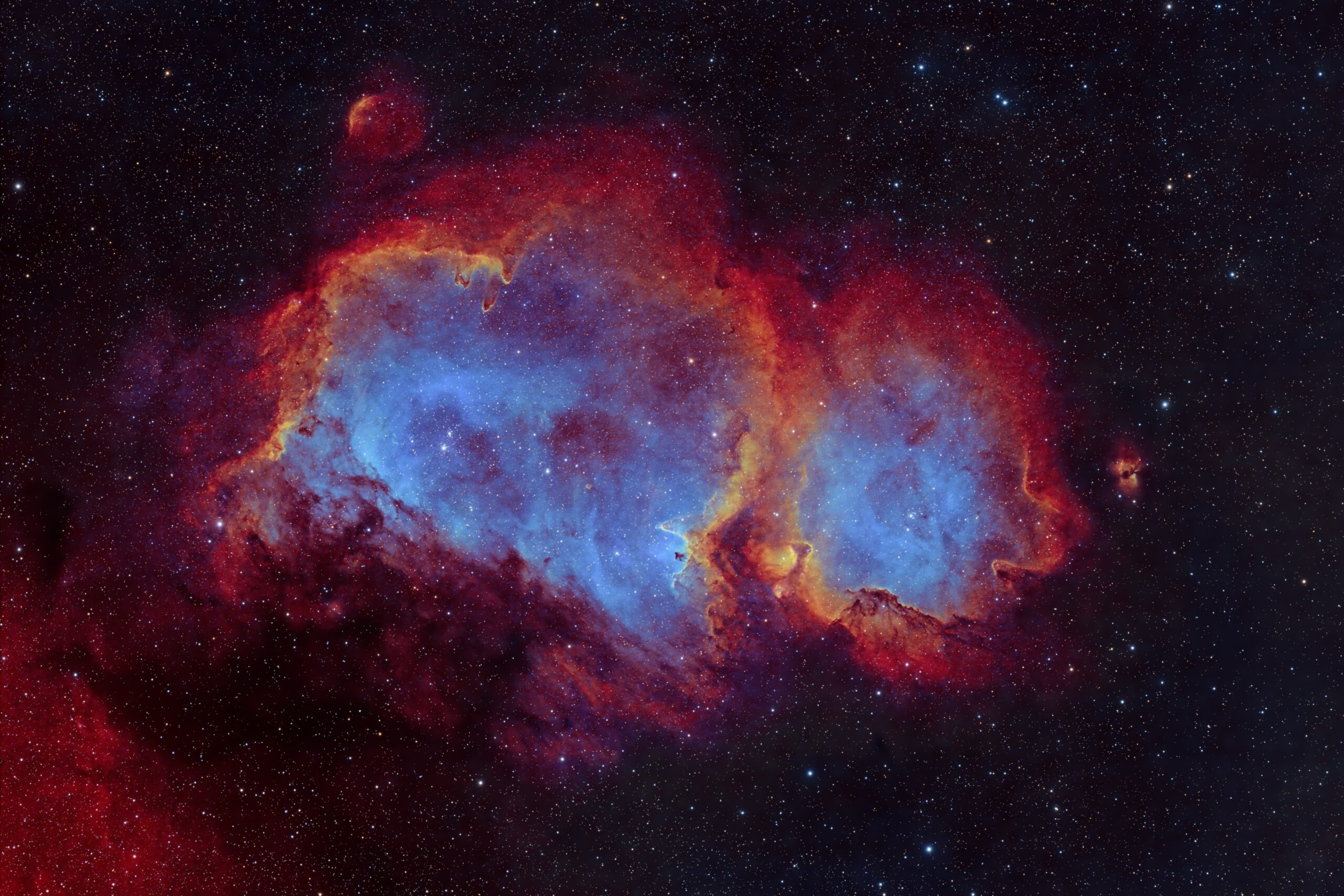



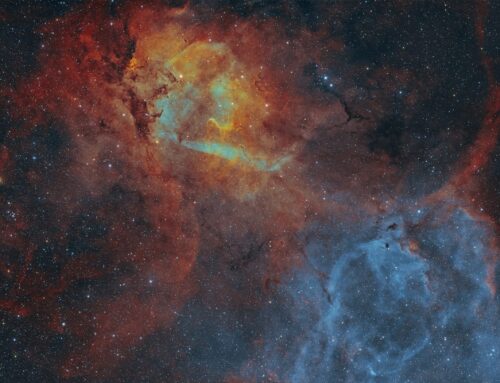
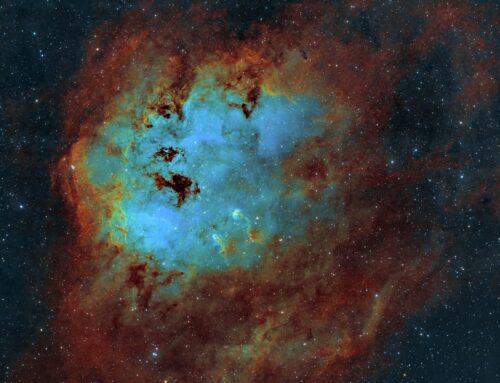
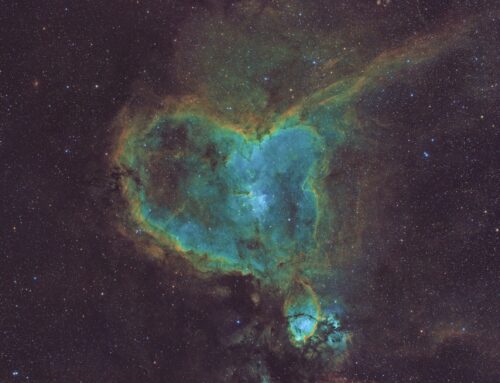
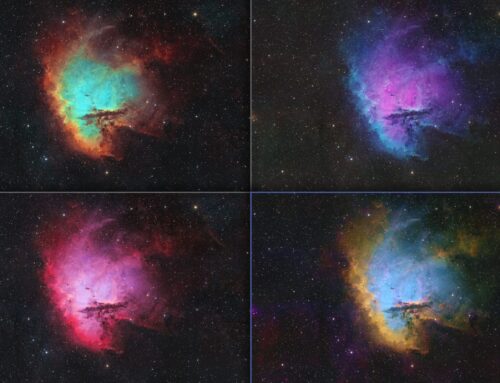
Great image. Always looked like a bison to me!